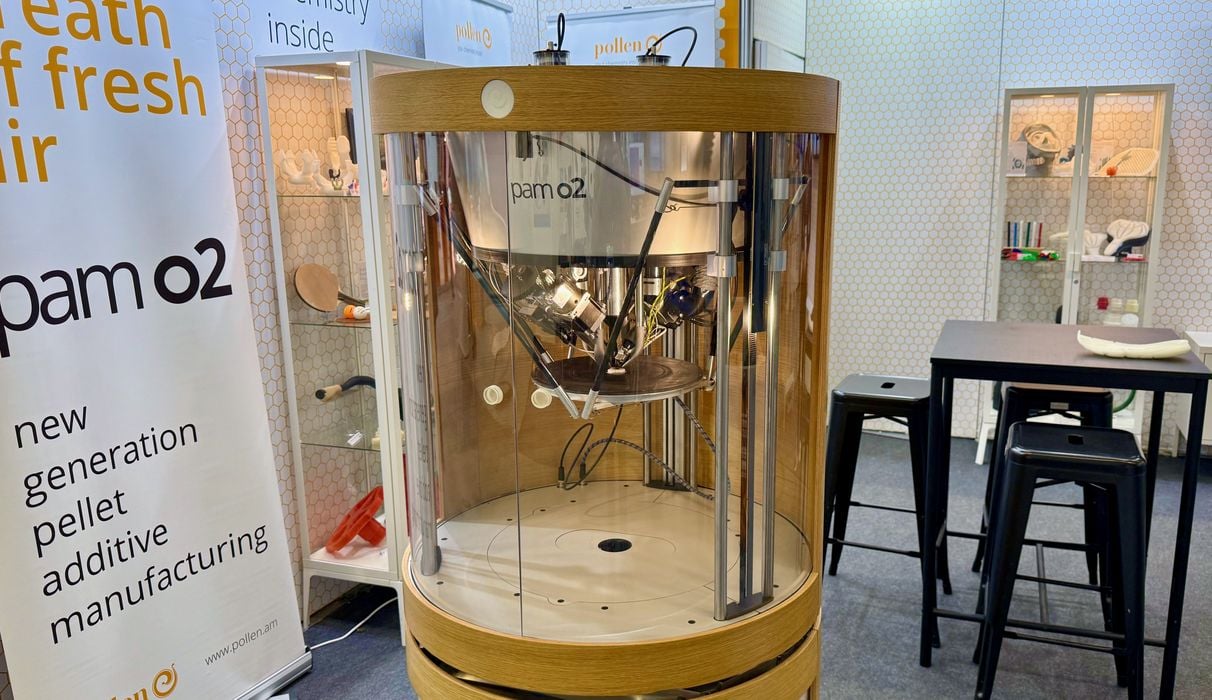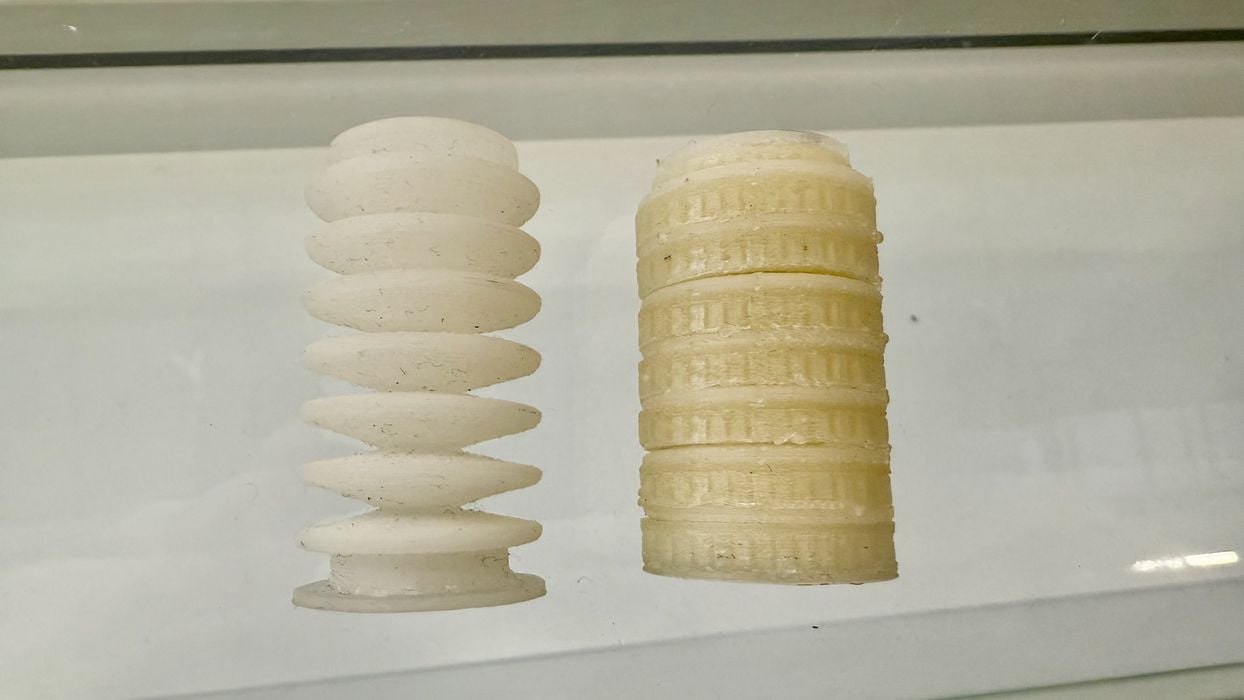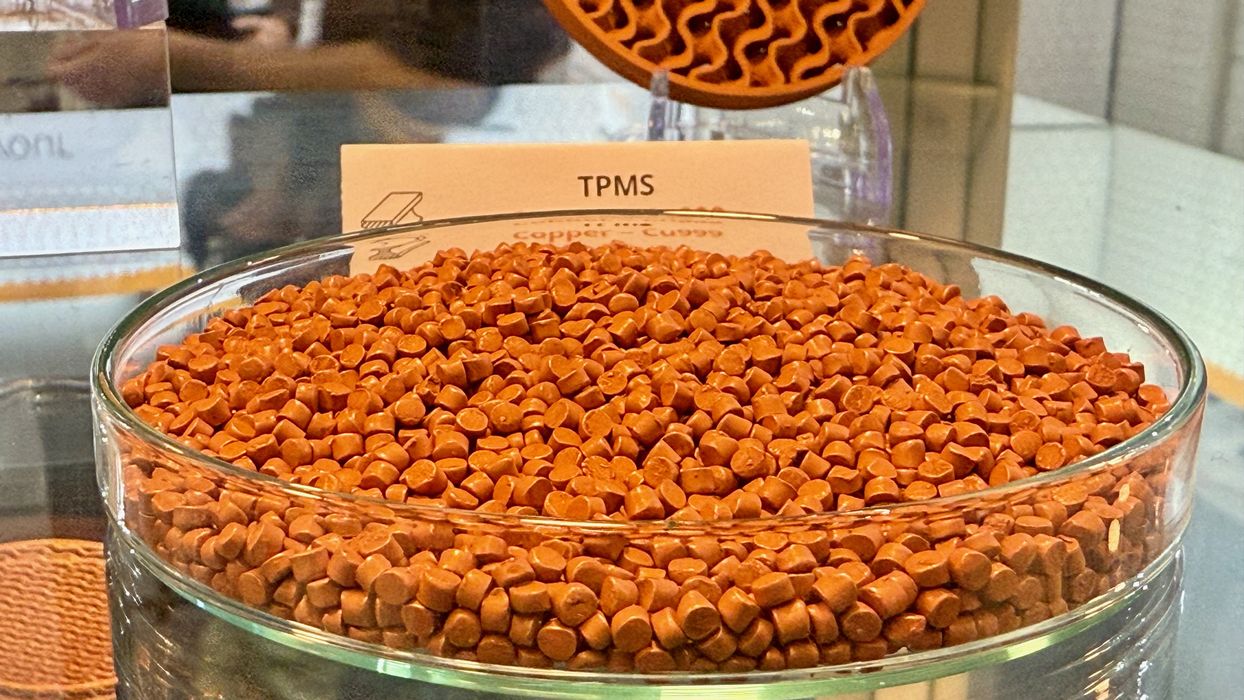
We were finally able to take a look at Pollen AM’s unusual pellet 3D printer.
The French company has been around for over ten years, building a series of 3D printers. These days they are on their fifth generation device, the PAM o2.
The o2 comes in three versions:
- pam o2 MC for metal and ceramic materials
- pam o2 HT for engineering and high temperature materials
- pam o2 for flexible and standard materials
That’s quite a range of materials, more than you’d expect to see on a rather small 3D printer, which has a cylindrical build volume of 300 x 300 mm.
The key to their system is their unusual pellet extruder. Pellets are the standard in polymer and industrial production, and are available at low cost. This is because the most common 3D printing process, FFF, uses pellets that have been transformed into filament, adding cost. With PAM technology you simply use the pellets directly.
Somehow Pollen AM have managed to shrink the pellet extrusion system to a rather small size, about 20cm in length. We were told they have a small screw and barrel, but have three different heat zones.

This allows them to include up to FOUR of them in a single o2 system. Pollen AM has arranged the four extruders to be tilted towards the center in what would initially appear to be a massive toolhead.
This is not the case: the toolhead actually remains stationary during printing due to its size and weight. Instead, the print plate moves in XY and Z directions using a delta motion system.
In other words, the o2 is a desktop 4-way pellet system. You can print in multiple colors, but it is more useful to print different materials, and that includes soluble support materials.

Here we see an interesting example of the machine’s capabilities. On the right is a print fresh off the printer, which includes plenty of soluble support material. On the left is the same print with the supports dissolved. The model material was an extremely soft elastomer, so soft it would tip over if held up. Printing something like this on other systems would be nearly impossible.

Indeed you can use an enormous range of pellet materials in the o2 systems, including metals. Pollen AM representatives showed us prints made from copper metal. The pellets used were a mix of polymer binder and copper powder, which requires debinding and sintering post processing steps.
Normally printing with this process requires a specialized 3D printer, but here you use standard pellets on the same machine you can print PLA.

Even better, certain applications will find that the standard pellets have already been certified for use by regulatory agencies. This avoids the need to certify a new filament material, for example.
Ceramics operate in a similar manner, so long as the ceramic pellets offer a plastic behavior at lower temperatures. In fact, we were told some Pollen AM customers are exploring the use of their ceramic materials for printing of jaw and dental bone reconstructions.
Pollen AM has been quite successful with certain industrial customers that use the o2 systems. Perhaps the most notable is Decathlon, the sports equipment manufacturer, which currently operates three of these systems.
Via Pollen AM
